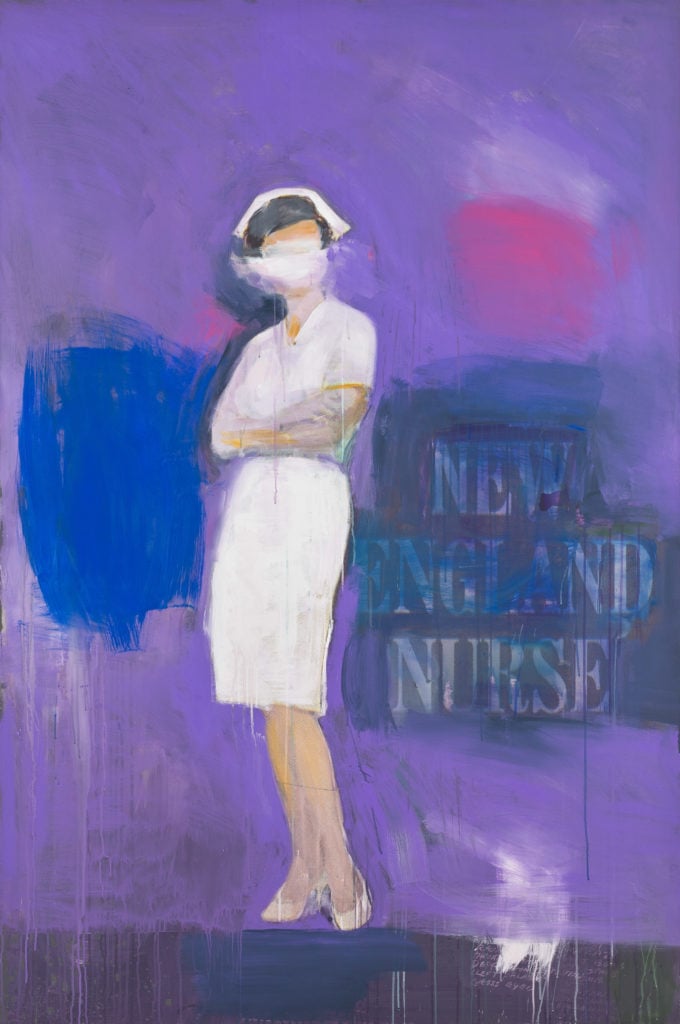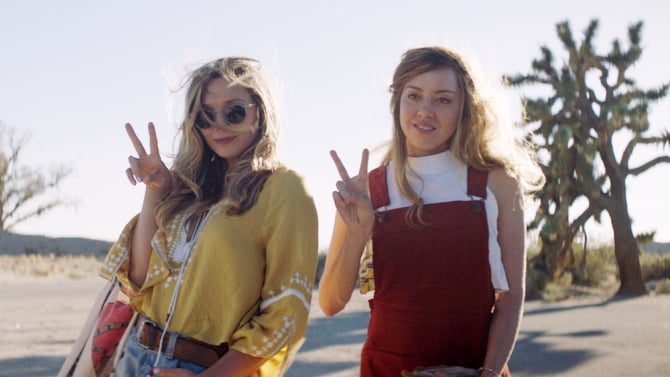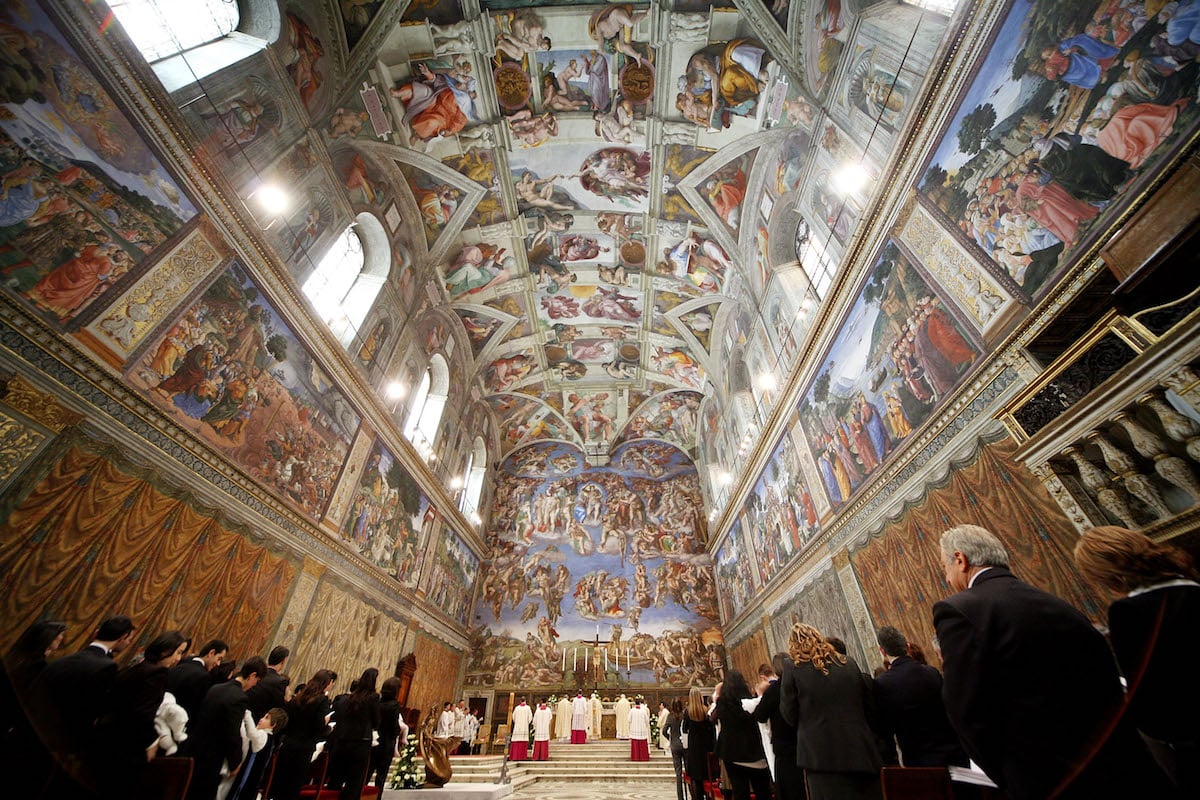Every Monday morning, Artnet News brings you The Gray Market. The column decodes important stories from the previous week—and offers unparalleled insight into the inner workings of the art industry in the process.
This week, another reminder that the art industry doesn’t always get to call its own shots…
STICK AND MOVE
On Friday, David Leonhardt of the New York Times parsed updated health data to reach an unsettling conclusion: both in the US and abroad, many places governed by left-leaning leaders are vaccinating residents at markedly lower rates than those governed by less progressive officials. If the trend continues, this split in performance could lead to a more uneven art-industry recovery than expected—with some of the largest markets becoming the biggest losers.
How does Leonhardt explain the mechanisms driving his politically loaded contention? His core assertion is that, to date, conservative governments have generally concerned themselves much less with establishing a collaborative, equitable inoculation process than with using top-down authority to maximize the number of injections administered in a race against the pandemic’s spread. It isn’t a value judgment, just an accounting of how the numbers match up to the policies.
I’m not going to spend much time sifting through the many caveats embedded in Leonhardt’s analysis (which he takes pains to do himself). This is an art market column, after all.
However, the data most definitely has bearing on our niche trade. The perception (though not always the reality) is that art-world capitals are art-world capitals in part because their artsy populations tend to skew disproportionately liberal in their viewpoints and thus elect more progressive officials. There are more than a couple fallacies at work in that line of logic, but even if the causality is questionable, it’s tough to deny a correlation between cultural havens and left-leaning governments.
Normally when this scenario plays out, the arts benefit. But Leonhardt’s analysis suggested to me that vaccine distribution may be an exception to the rule—not because the arts are the arts, but because the arts make up part of daily life for many citizens. And as we’re all painfully aware by now, “daily life” in any community will remain an emaciated, mutant version of itself until the community in question reaches herd immunity.
To visualize how the art trade might be affected by the tension between political orientation and vaccination rates, here’s a chart I put together over the weekend. For every 100 people in each country, it captures how many anti-coronavirus jabs have actually been administered to date. (Side note: A hearty thank you to the Financial Times for legitimizing “jab” as another synonym for “vaccination.” You are a shining light in these dark, linguistically monotonous times.)
Please note that this is not—I repeat, not—a top 10 list; it’s a deliberate mongrel that contextualizes where the art industry stands in relation to national leaders in the inoculation race. The selections combine some of Leonhardt’s analytical highlights with my own sense of what matters most to the upcoming art-market calendar. (All data came courtesy of the Times’s global vaccination tracker on Saturday.)
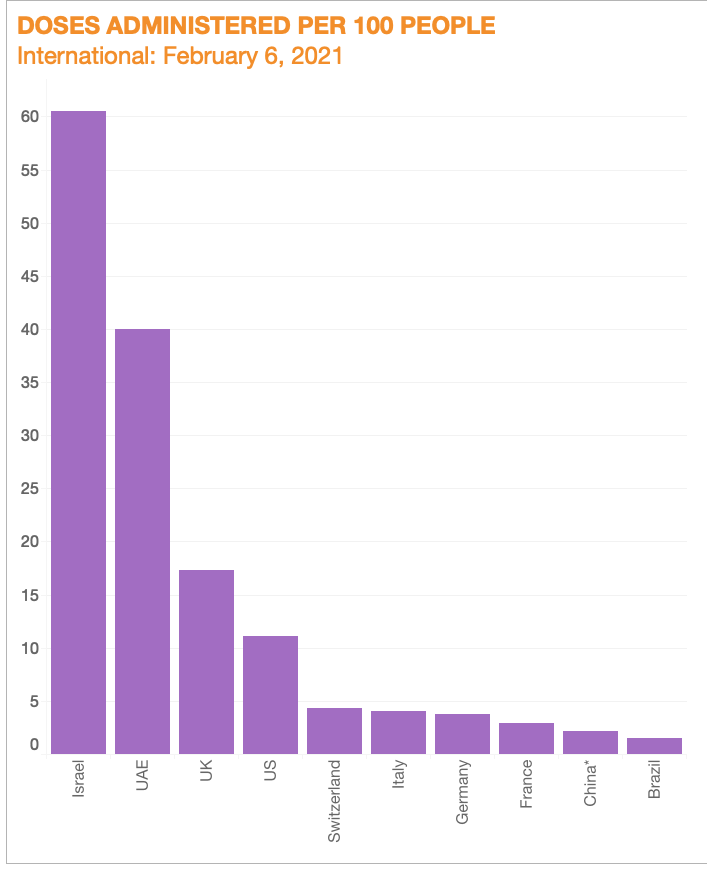
© Artnet Price Database 2021.
A few thoughts on what the data means:
- Thanks to the UAE’s public-health infrastructure, Art Dubai (scheduled to open March 17) has never looked more appealing.
- In comparison to Israel (60.5 jabs per 100 people) and the Emirates (40), the UK (17.3) lags far behind the leaders…
- … but the Brits are also dusting the US in this race, with Her Majesty’s Public Servants having completed about one-third more injections to date. This makes the UK by far the closest of the perennial Big Three art markets to reaching herd immunity.
- Yet the same relativism manifests when you compare the US’s progress to every other regional art market of consequence.
- American public health officials have administered over 2.5 times more injections (11.1 per 100 people) than Big Pharma Valhalla Switzerland (4.3), helping explain part of why Art Basel already postponed its tentpole fair from June to September.
- The US has also given out nearly four times more doses per 100 people than France (2.9), which is upsetting news for the growing number of dealers and collectors that have been gravitating there to dodge the slow-motion chaos of Brexit…
- … and Uncle Sam has distributed roughly five times more doses than China (2.2), the last of the Big Three markets.
China deserves a little more unpacking. First, the Times includes Hong Kong in its China data, meaning the low inoculation rate is worth watching in regard to Art Basel Hong Kong’s viability this May. Second, although Xi Jinping’s aggressive authoritarian action largely stamped out the virus in China last year—remember, there were major in-person art fairs held in Shanghai in November—recent outbreaks have pushed officials to impose lockdowns on two provinces that together comprise roughly 60 million people. Perhaps worse, multiple polls have shown that many Chinese now feel no threat from the virus and no urgency to be vaccinated (though that could change quickly based on state messaging and mandates).
Incidentally, Art Basel just announced last Tuesday that would-be exhibitors unable (or unwilling) to travel to its Hong Kong fair could still participate by purchasing what my colleague Eileen Kinsella dubbed “ghost booths”: on-site satellite stands installed with the dealer’s works but staffed by Art Basel personnel. Several factors undoubtedly contributed to the decision to offer this COVID-era novelty, and while I can’t say whether Chinese vaccination data was among them, it certainly didn’t give Art Basel much reason not to.
Last point on the global competition: if you’re an Old Master dealer wondering about the status of TEFAF Maastricht (rescheduled for September from its usual March bow), the Dutch had managed to administer only about 2.1 doses per 100 people as of Saturday, making them less effective than China but more effective than Brazil (1.5), where the SP-Arte fair is hoping to debut in May. So don’t pack your vintage Louis Vuitton valisette just yet.
Despite all of the above, though, the international picture only teases part of the pandemic-recovery story.
UNITED STATES OF ANXIETY
When trying to tease out art-market implications of international vaccination data, the heftiest caveat is that countrywide figures become less and less helpful the more land any given country covers.
The US offers the clearest example—and the most meaningful one for the art market, since it has paced the rest of the earth in sales nearly every year for which we have reliable data.
After all, the US art market is highly concentrated in just a handful of states. So what happens if we slice the country’s data thinner?
Short answer: We find more disquieting news. Here’s another chart, this time breaking down US inoculation data at the state level. Like the international chart above, it does not show the top 10 performers. Instead, it fuses Leonhardt’s insights with my sense of art-market relevance to indicate where our industry stands thanks to the interstate vaccination marathon. The data shows the percentage of residents to receive at least one injection as of Saturday, courtesy of the Times’s US vaccination tracker.
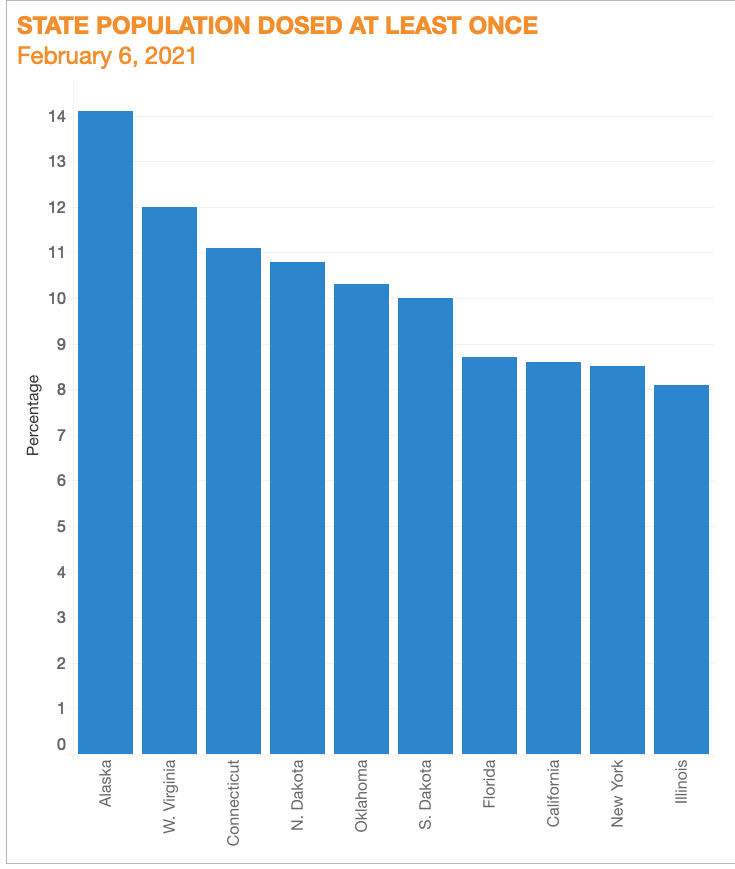
© Artnet Price Database 2021.
Again, I’m just going to fire off a few bullet points here:
- Most jarring finding: no state’s vaccination rate is within hypodermic-needle distance of the UK as a country.
- New York (8.5 percent) and California (8.6 percent), the two pillars of the US art market, have each only managed to jab about one-third fewer residents than nationwide leader Alaska (14.1 percent), a state which (with all due respect) matters about as much to the art trade as the opinions of the modern clergy.
- Florida, where last fall many high-level dealers and collectors began snowbirding, has performed just as tepidly as the market’s traditional coastal capitals.
- With just 8.1 percent of Illinoisans dosed once, state officials have more than justified Expo Chicago’s decision to postpone the in-person fair from its (previously rescheduled) April 8 date.
- The low-key best news for the art market here may be the 11.1 percent vaccination rate in Connecticut—one of only seven states to reach double digits so far. Yes, the art market’s throne sits in New York, but a sizable amount of its buying power sleeps a short train (or helicopter) ride away in the state The Economist recently dubbed “the country home of capital.” The sooner mega-financiers living in Greenwich feel safe enough to spend and travel, the better it is for the art-sales landscape overall.
In the end, whether we’re looking at domestic or international vaccination rates, the only certainty is that circumstances will continue to change daily for the rest of this year. So it would be naive to assume these snapshots offer a dependable view of where any of us will be a month from now, let alone further out.
That doesn’t mean they can’t be valuable milestones for anyone trying to plan for what comes next. But they also reinforce that almost all of our herds have a long way to go before reaching immunity, and there is little the art world can do to speed up the journey.
[The New York Times]
That’s all for this week. ‘Til next time, remember: it’s important to recognize when you can influence outcomes, but it’s just as important to recognize when you can’t.
Follow Artnet News on Facebook:
Want to stay ahead of the art world? Subscribe to our newsletter to get the breaking news, eye-opening interviews, and incisive critical takes that drive the conversation forward.
